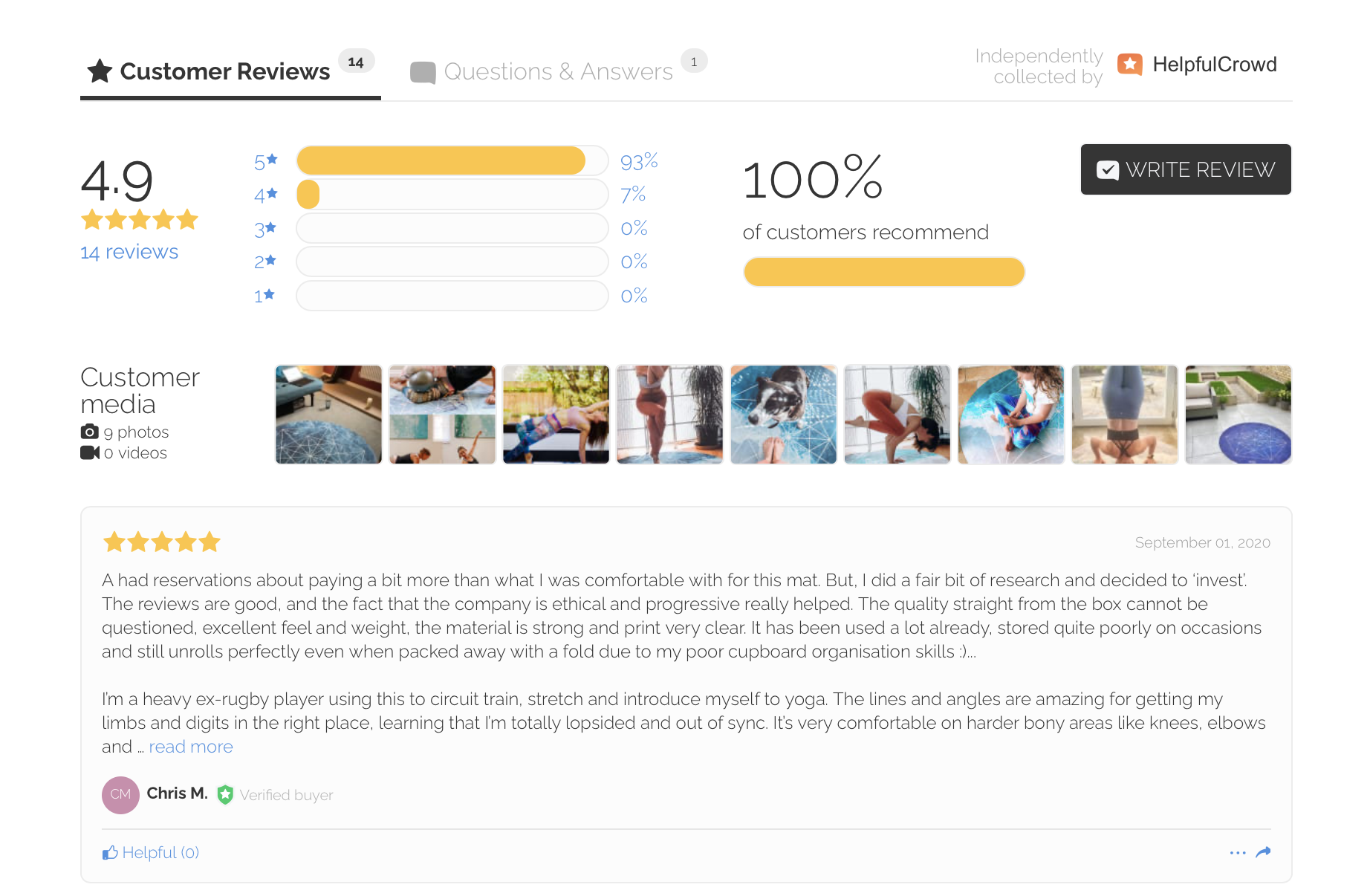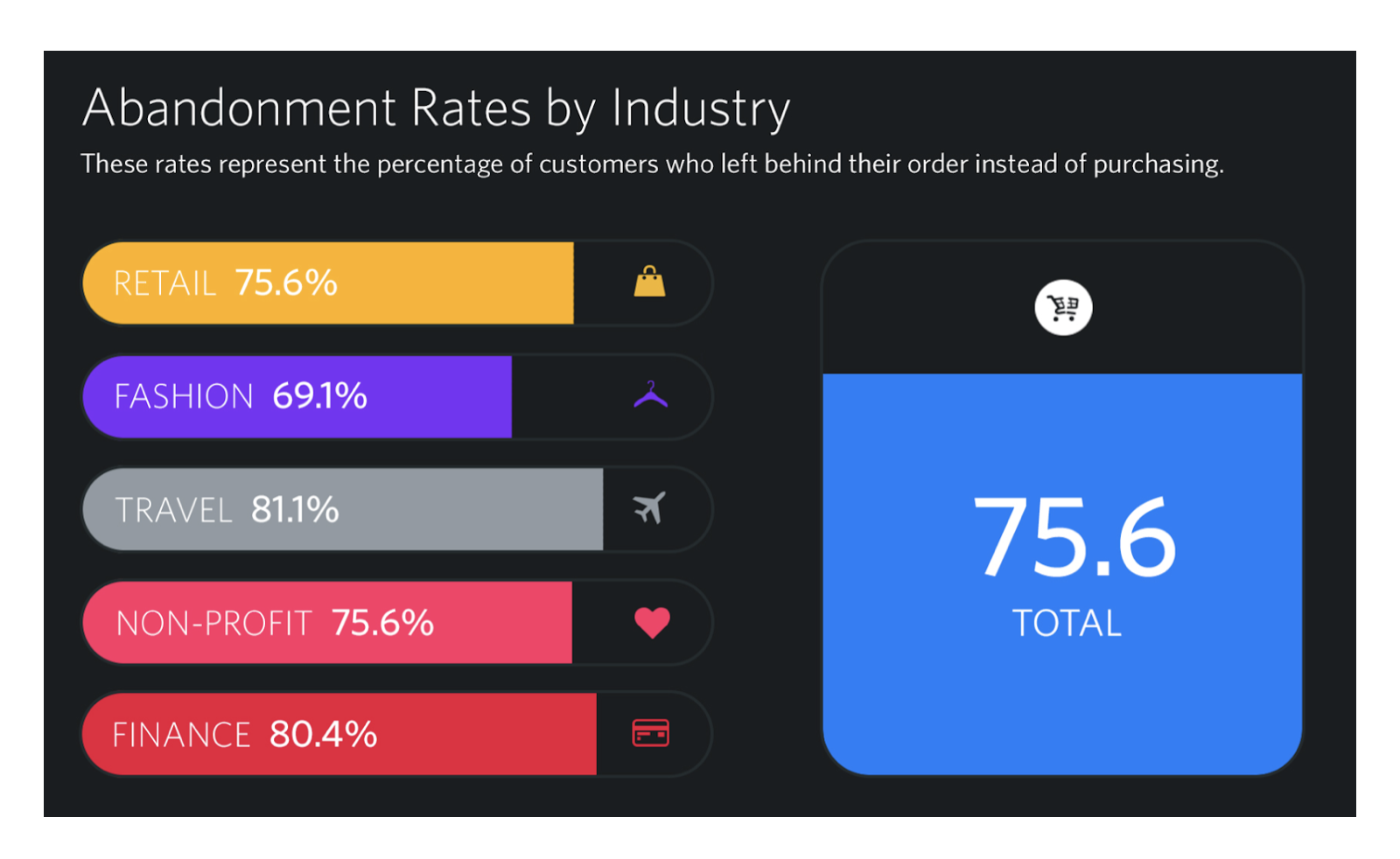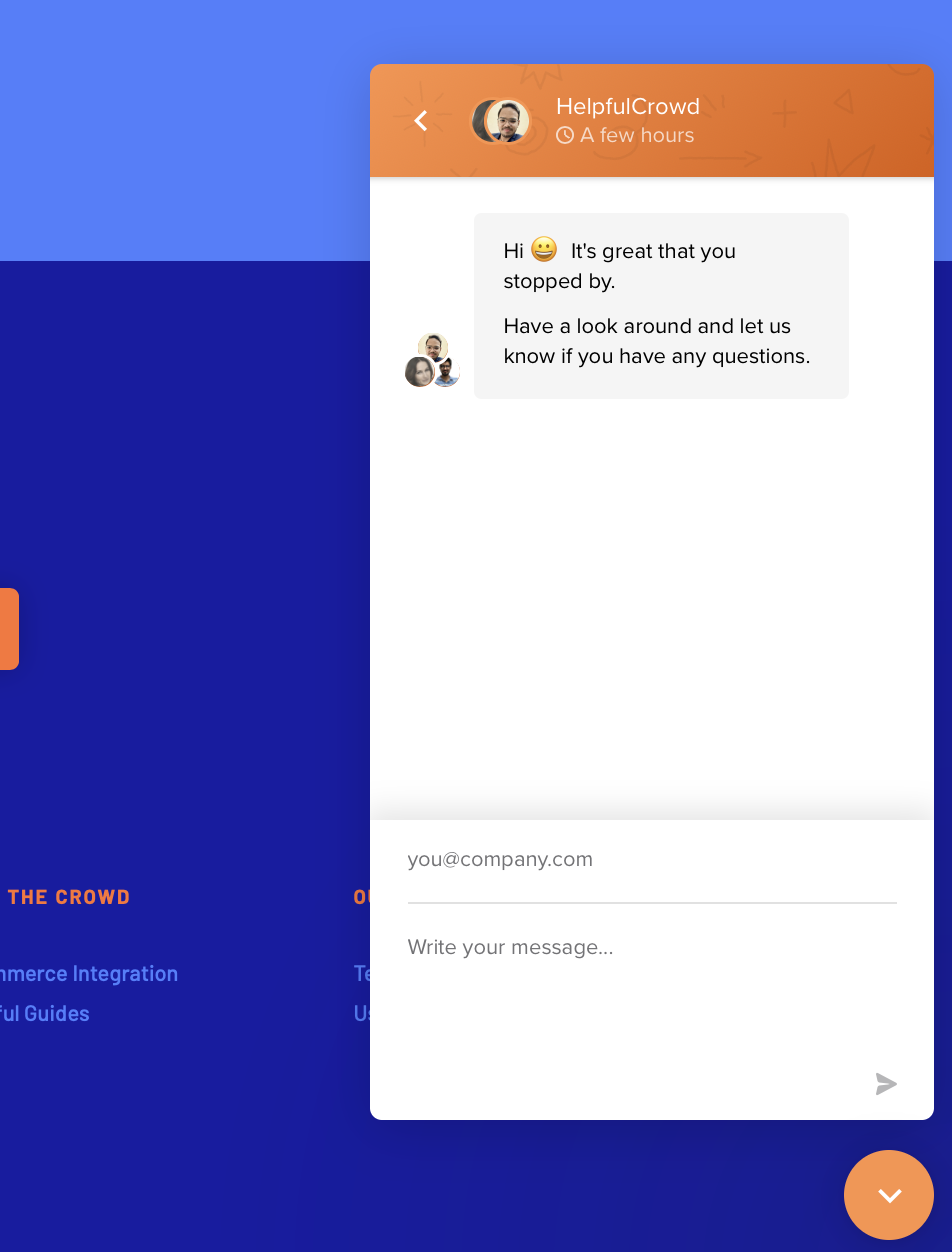“If you build it, they will come”, or so they say. As many in the eCommerce sector will attribute, this statement isn’t always true. Having a great online store is all well and good, but if customers aren’t finding your store, it’s of no use.
eCommerce marketing is the act and process of driving awareness and action toward a business that sells a product or service electronically. Attracting visitors to facilitate online purchases can take a variety of forms, using platforms including digital content, search engines, and social media.
1. Create SEO-friendly content including titles & meta descriptions
SEO or search engine optimization is a hot topic for all businesses but is particularly important for those in the ecommerce space. SEO is the practice of tailoring your website to Google’s ranking process and preferences, ensuring your site appears under the most useful search terms.
Strong search engine placement for a particular keyword phrase can bring you a significant amount of web traffic, and as an ecommerce site, you can also take advantage of long tail searches too.
The starting point of any SEO campaign is your ecommerce website itself. There are a number of things you can do within your website to ensure Google views your website in the way you want it viewed, with the aim of positioning your site in response to relevant search terms.
Title tags (shown in purple) and meta descriptions (the small text under the site URL) are the content that appears in search engine listings for your page. The title tag is the link text (usually the title of your page as it appears in your browser), and the meta description is a longer explanation which appears underneath the title in search engine results pages. This text can be customized for each individual web page, taking into account the products or categories contained within it.

The above meta description search result from Lonely Planet, which ranks for the search term “travel inspiration”, does a great job of both satisfying the search query and selling the brand. In the first two words, it appeals to travel lovers who might be searching for inspiration, before going on to outline concisely what the brand has to offer them. The sitelinks that appear beneath it also entice searchers to click on a more specific page.
2. Integrate keywords in ALL your web content
All website content needs to have your keywords contained within it.
Generally, try to optimize one primary keyword or long-tail keyword per page, and be sure to ensure your title tags and meta descriptions are consistent. Sprinkle your keyword through the content but take care to maintain flow and readability.
3. Create internal links
Your website should be linked to and from other pages within your site. Good linking between internal pages helps visitors to navigate around your site, as well as giving Google a good lead into how you want your website to be interpreted.
4. Don’t duplicate content
Take care not to duplicate content on your website. Where Google finds two exact matches, it gives preference to the most SEO-optimized page and discounts all the others. If you have too much duplicate content on your site, you may find that your whole website is filtered and reduced in terms of search visibility.

Image courtesy of MOZ
5. Create keyword-rich URLs
Be sure to keep your URLs keyword rich where possible. Include your keyword in the URL and use descriptive words rather than product codes or numbers. Again, this helps Google accurately index and position your site.
6. Do keyword research
Keyword research forms the basis of any content marketing and SEO strategy. After all, most consumers start their buyer journey with a search engine.
Use a tool like AHRefs to pick out the keywords that are relevant to your industry and business. You’ll be able to sort your keyword suggestions by difficulty and search volume, and also check out which keywords your competitors are ranking for.
Learn how to do keyword research with this handy AHRefs guide.
7. Pursue achievable keywords
Find keywords that have a reasonable difficulty rating. After all, there’s no point in going after those keywords with a difficulty rating above 70 in the early stages of your marketing strategy. Initially, opt for the “low hanging fruit” – between a difficulty rating of 20 and 50, before taking on larger competitors.
8. Create great ecommerce product page descriptions
Commonly, ecommerce product pages are the most neglected pages on the web. This is often because ecommerce store owners offer only basic details about an item on their product pages, potentially missing out on a huge opportunity. Not only are brief product descriptions inadequate for Google, they are also potentially falling short for consumers.
A good product description should be unique and compelling, incorporating your keywords and a clear call-to-action statement.
Ecommerce store owners typically copy and paste manufacturer’s merchandise descriptions on their own sites. These are not only boring to read but have potentially been indexed by Google already – possibly thousands of times.
Create original descriptions for your product pages that reflect your brand voice, standing your store apart from the competition that sells the same or similar products.
Research the product carefully and identify the characteristics that most appeal to your audience. Use this alongside your keyword research to create SEO-friendly sales copy that grabs attention and initiates action.
Be sure to use your keyword phrase in the page title, product description and meta tags.
Don’t Forget: Each image on your product page will also have an editable ALT tag. This tag should be edited to include your keyword.
9. Incorporate product reviews
Give search engine bots extra content to crawl by adding product reviews to your product pages. Customers who have purchased the product may highlight features that you had not previously considered. In addition, positive reviews can help customers make their purchasing decision.

10. Add relevant links & call-to-actions in your product pages
Hyperlink related products within your product description to add further value to your eCommerce product pages. You could even suggest relevant products that could interest the customer.
For example, if you own a homeware store and are writing a kitchen cutlery product page, you can mention and link to other kitchen items such as plates, cups and mugs.
Call-to-action statements are extremely important to engage customers and create a sense of urgency. While you’ll likely already have thought about call-to-action statements on your site, don’t forget to include these on your product pages too. Good examples of call-to-action statements include “Free shipping ends in two days” or “Buy this product today and receive a free gift”.
11. Proof-read your product pages to avoid grammar and spelling errors
Grammar and well-written content plays a key role in how customers perceive your brand. Ensure language is consistent across your site and take time to proofread and edit your content until it is perfect. After all, customers aren’t likely to purchase from a business who seemingly makes sloppy errors on their store.
12. Create a link building strategy
Link building is a great way to improve your site SEO performance. Essentially, this is the process of having a link to your eCommerce store from another reputable site.
Search engines use links when trying to decide which site should rank as number 1 on their pages. For this reason, link building cannot be ignored.
A few methods of link building include:
- Distribute press releases: Create news around your eCommerce site and distribute to business news sites. While they won’t always be successful, your press release could feature, potentially providing a valuable link.
- Create guest posts: Guests posts can be a great way to place your store and your products in front of relevant audiences – often for free. Submitting guest posts will help to enhance your own domain authority, telling search engines that you are a reliable source for a particular topic. You’ll first need to identify sites that rank for keywords related to your product. You’ll then need to pitch your idea to the owner or editor of the site. Take time to study previous articles on their site so you can show an understanding of their audience and pitch an article that fills a gap or relates to a previous topic. Include a link within your guest post back to your ecommerce store.
- Directory listings: Directory listings are a relatively easy way to benefit from links and while not as influential as they once were, can be a great way of picking up a sprinkling of additional links.
- Contests & competitions: Team up with a media outlet, blog or online site to give away one of your products in return for an online link.
13. Create a solid email marketing strategy
Despite the rise of social media, email marketing is alive and well. 91% of consumers check their email on a daily basis, and email remains the #1 communication channel. A solid email marketing strategy can be a great way to stay in touch with your customers and convince them to buy more.
- 77% of shoppers want to receive brand updates via email (Exact Target)
- Email marketing drives over $2.5 billion in sales yearly (Ad Age)
- For every $1 a brand spends on email, consumers spend more than $40 (Experian)
- 82% of consumers open emails sent by companies (Litmus)
The best part of email marketing is that it can be automated. Automation means you can set up drip campaigns to subscribers, segmented by interest or stage in the buyer’s journey.
In the world of GDPR and data protection laws, be meticulous about email list management. Ecommerce marketers and store owners must be careful when and how they add website visitors to their mailing list and be transparent about how they are using and storing a contact’s information.
14. Follow up with customers post-purchase
Sending a follow-up email a few days after a product has been purchased and delivered, keeps the conversation going and invites a customer to submit feedback.
A post-purchase follow up also shows that you care about the customer beyond a sale and that your company has a genuine interest in their experience and satisfaction.
Their feedback also creates user-generated content, which can be used in your marketing efforts down the line.
Platforms such as HelpfulCrowd allow you to automate the sending of review request emails too, helping you to capture customer feedback in an effective and seamless way. HelpfulCrowd will even help you time your review request emails perfectly.
15. Reduce abandoned shopping carts
While there are many different reasons why a user might abandon their shopping cart, a quick email to diagnose the problem and ultimately retain their business can make the difference between a lost customer and a purchase. Send a polite email to a visitor reminding them to complete the checkout process, offer help or even recommend other related products to get their mind back on your store.

Credit: Barilliance – List of average cart abandonment rates by industry
16. Use influencer marketing and experience the “Kardashian effect”
Put simply, influencer marketing focuses on people or brands that have key influence over your target market. The term is widely associated with individuals who have thousands of social media followers, including celebrities. Brands generally provide free product samples to the influencer, who shares their experience with their social media following. This “Kardashian effect” often sees an increase in interest around a particular product and has the potential to drive traffic and sales. Additionally, there are options to pay an influencer to promote a product, and this usually takes the form of “sponsored posts”.
17. Try affiliate marketing
81% of brands employ affiliate marketing, and ecommerce stores are particularly suited to this form of promotion. Affiliates are businesses or individuals that help sell your product for commission. Unlike influencers, affiliates generate interest in products via more traditional channels including content marketing and paid advertising.
18. Join your customers on social media
Let’s face it, no ecommerce marketing plan would be complete without the inclusion of social media. Creating and maintaining a presence on Twitter, Facebook and Instagram is not only a great way to nurture your brand, but also a solid way to boost sales.
Ecommerce stores are highly visual, and making a sale relies on showcasing your products or services in the very best light. Success on social media works in the same way, so be sure to focus on the quality of your imagery to drive interest, attention and traffic.
- Roughly 68% of consumers go to social media channels to read product reviews and feedback before buying a product. (Brandpoint)
- 42% of customers expect a response to a question posted online about your brand or products within one hour. (HubShout)
- 91% of ecommerce sites saw an improvement in their ranking thanks to their presence and activity on social media channels. (PRWeb)
19. Find the social media platforms that work best for you
Depending on your area of specialism, different social media channels may offer varying degrees of success, but you’ll likely still benefit from having a presence on all of the major social platforms. Use an analytics tool and run regular tests to work out the success of your various posts.
20. Overlook Instagram at your peril
Instagram is a particularly useful social media platform for ecommerce businesses as it enables you to post product photography clearly and expand your product reach using relevant hashtags. You can also include a direct link to your online store, creating “shoppable content” – that is content that enables a customer to buy right away. Shoppable content can include anything from display ads within a social feed through to additional tags that take users directly to a shopping cart. The key aim of shoppable content is to eliminate friction from the overall buying process.
21. Encourage customers to share their experience organically on social media
Social media is also a useful way to share customer reviews and experiences, and platforms like a Facebook business page or Twitter enable you to share product praise and feedback widely.
22. Automate social media
To save time, why not schedule your weekly or even monthly social media posts using a platform such as Hootsuite or Tweetdeck. This will allow you to focus on other areas of the business. Of course, you’ll still need to monitor your social media channels and respond to questions or comments from followers.
23. Use personalization wherever possible
Personalization is arguably the best form of marketing. In fact, companies that use personalization can see a revenue increase of six to ten percent.
Put simply, this process involves catering for individuals within your marketing, from adding a customer’s name in the subject line of a review request email to recommending content or products based on a visitor’s behavior. The overall goal of personalized content is to move people along the buyer’s journey at a faster rate, and to strengthen the existing relationships you have with customers.
24. Make use of word-of-mouth marketing
This marketing tactic is based on the premise that customers want advice from people just like them. Let’s face it, buyers are skeptical of marketing tactics used by companies and prefer the experience of real customers. The following points show some great ways in which to capitalize on WOMM.
25. Acquire and share real customer reviews
Real customer reviews are one of the best ways to build brand trust. Genuine reviews provide an honest insight for visitors to your ecommerce store, and while positive reviews are always preferential, negative reviews are by no means a deal breaker. In fact, consumers are highly suspicious when no negative reviews are displayed on an ecommerce store, suspecting a brand of screening or even faking reviews. Use a platform such as HelpfulCrowd to automate your review request emails and to organize your review responses.
26. Set up incentives to encourage referrals
When customers solicit family members, colleagues or friends to buy products from you, that is known as a referral. While this can happen naturally, you can make it happen with more regularity by introducing a referral program. Just ask your customers to refer others in return for something of value. This could be a free gift, a discount or promotional coupon or discount code.
Dropbox are a good example of a company operating a referral program. They offer additional cloud storage space if you refer a friend to sign up.
27. Start a loyalty program
A loyalty program offers an incentive for a customer to continue doing business with you through discounts or offers. It can be an effective way of nurturing repeat business, acquiring user-generated content and retaining customers.
Creating a customer loyalty program certainly takes some planning and preparation, and it’s worth thinking carefully about ways your customers can show loyalty. Reward repeat purchases, social media mentions or content shares, with points, perks or discount codes and coupons.
28. Create and share case studies based on your buyer persona
Potential customers love hearing experiences of people just like them. Share case studies that showcase a customer’s life before your product and, importantly, how their life has changed and improved since.
29. Install live chat & chatbots
More and more ecommerce businesses are investing in live chat. Depending on the size of your business, you can have a live person available to chat with potential customers or set up a chatbot to answer those questions most frequently asked. Live chat options can help to mitigate any objections or cart abandonment, and also promote an image that your brand really cares about customer service.

30. Create original content
Nothing builds a strong connection with your customers like original content that reflects your brand. Whether it’s video content, blog posts, audio segments or a podcast, create content that places your eCommerce site as a trusted knowledge base in your area of expertise and conveys brand voice and personality. This not only helps search engines to see your eCommerce site as a topic expert, but also drives footfall and more potential customers.
31. Create a blog strategy and write informative content
Relevant blog posts are extremely important for any online store. Blog content is the perfect place to position those additional keywords and phrases for which you wish to rank.
Here’s an example of how blog posts can help: If you manage an online shoe store, writing a main blog post about “the best spring/summer fashion trends” will attract everyone involved in fashion. As your visitors become more engaged, you can create blog posts that will move them into consideration, such as “essential footwear trends for summer” or “how to select the perfect shoes for summer”. Visitors can then be moved into the lead phase by adding downloadable look books or mini fashion magazines.
Create a blog schedule to keep your posts on track.
32. Embrace user-generated content (UGC)
User-generated content is a powerful (and free) marketing tool, whereby customers voluntarily promote and share your business.
UGC helps to drive traffic to your eCommerce store as well as building an authentic following of people who are interested in what you are offering. Types of UGC include:
Social Media Hashtags: Create a brand hashtag to track your UGC.
Reviews: Customers share feedback about your products or services.
Competitions: Create a competition or contest where customers enter by displaying or using your product in some way.
33. Use video content
With over a billion active users, YouTube is a powerful video platform. What’s more, YouTube is now the second largest search engine behind Google.
Use highly searched keyword terms to determine the topics of your video content and share videos that are helpful to your audience and related to your product. Tutorial videos are particularly popular with ecommerce stores and can be a good way to show customers how to use your product or get the most from it.
You can also talk to your customers directly to add a personal touch, telling them about a new product launch or sale.
34. Answer FAQs
If your audience is asking questions relating to your products, answer them on a keyword-driven FAQ page. Respond to high volume, long-tail keyword search questions to help drive traffic, increase authority and deliver customer satisfaction.
35. Monitor and adjust your strategy
As with any part of your business, you’ll need to monitor your marketing activities to identify what works and what doesn’t. A good starting point is to identify industry benchmarks in areas such as conversion rates, click-through rates and customer acquisition cost. You’ll then be able to compare your own performance against other eCommerce businesses in your sector.





